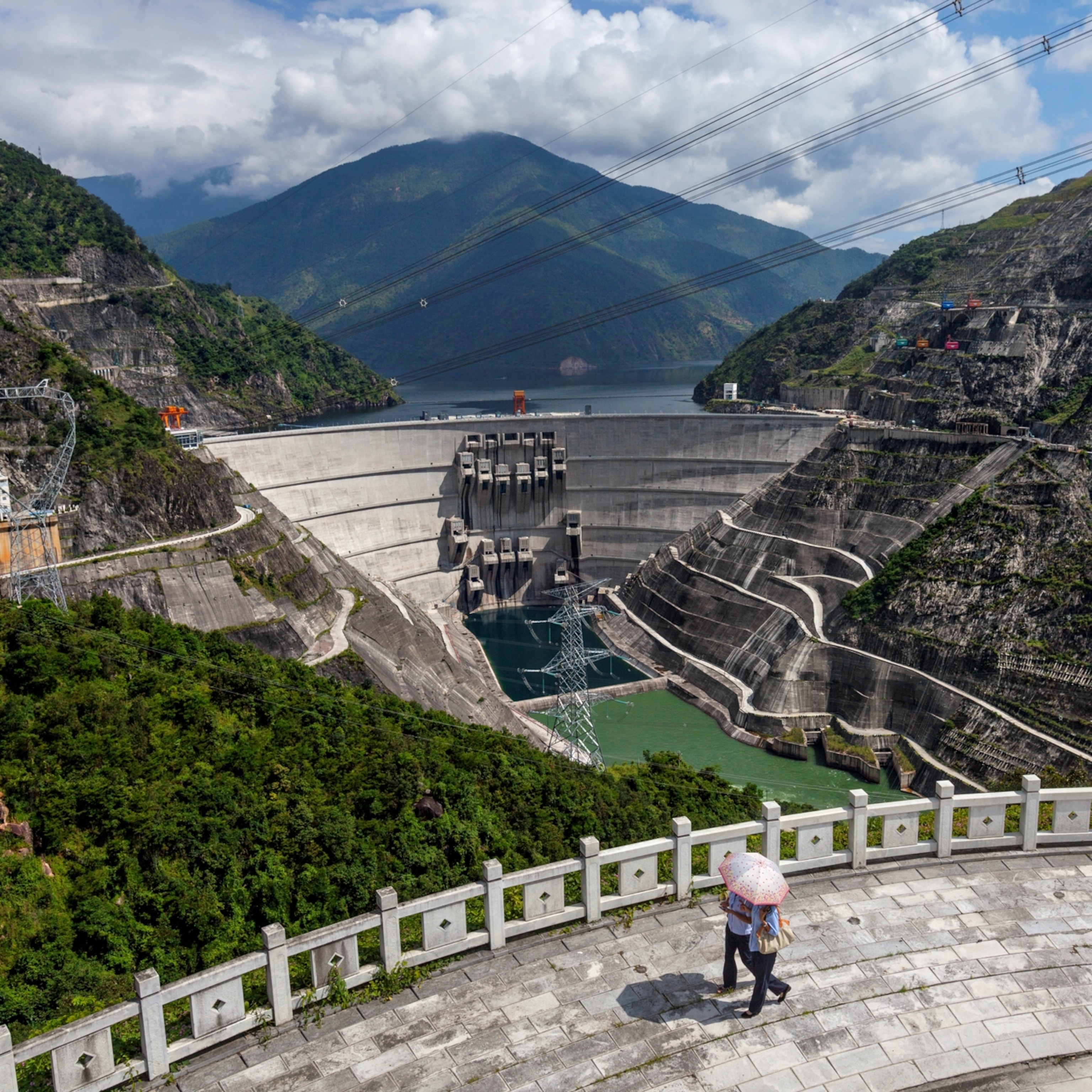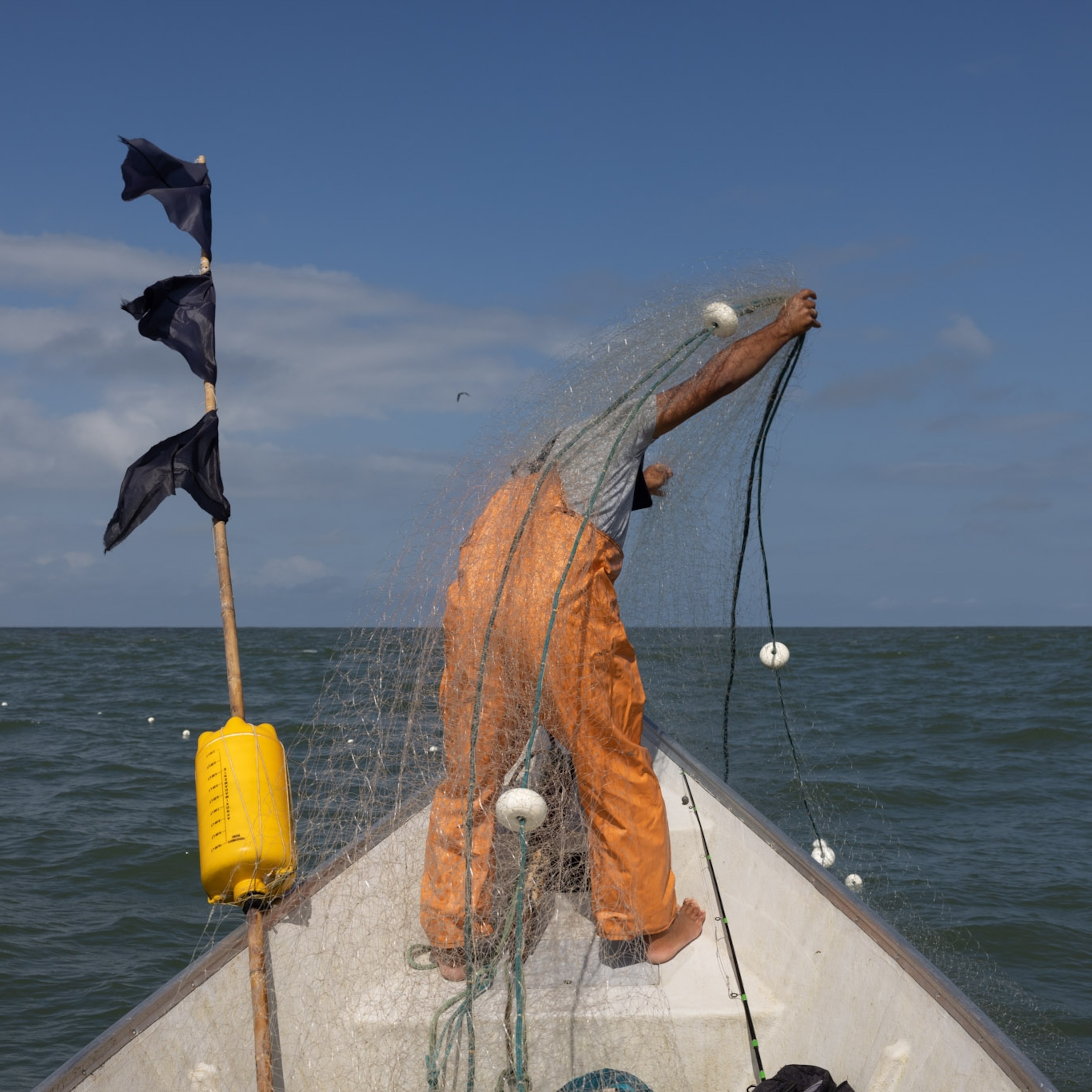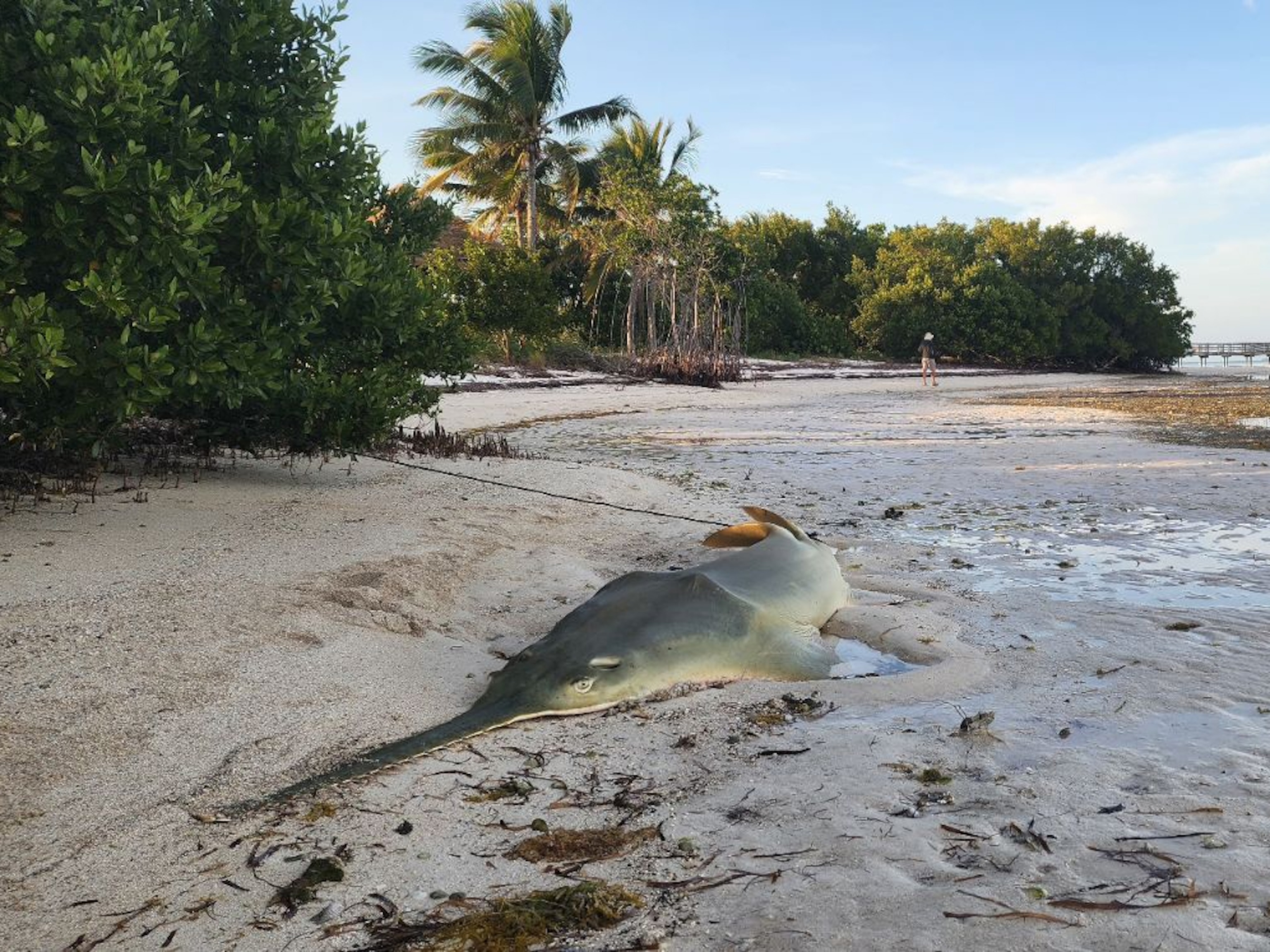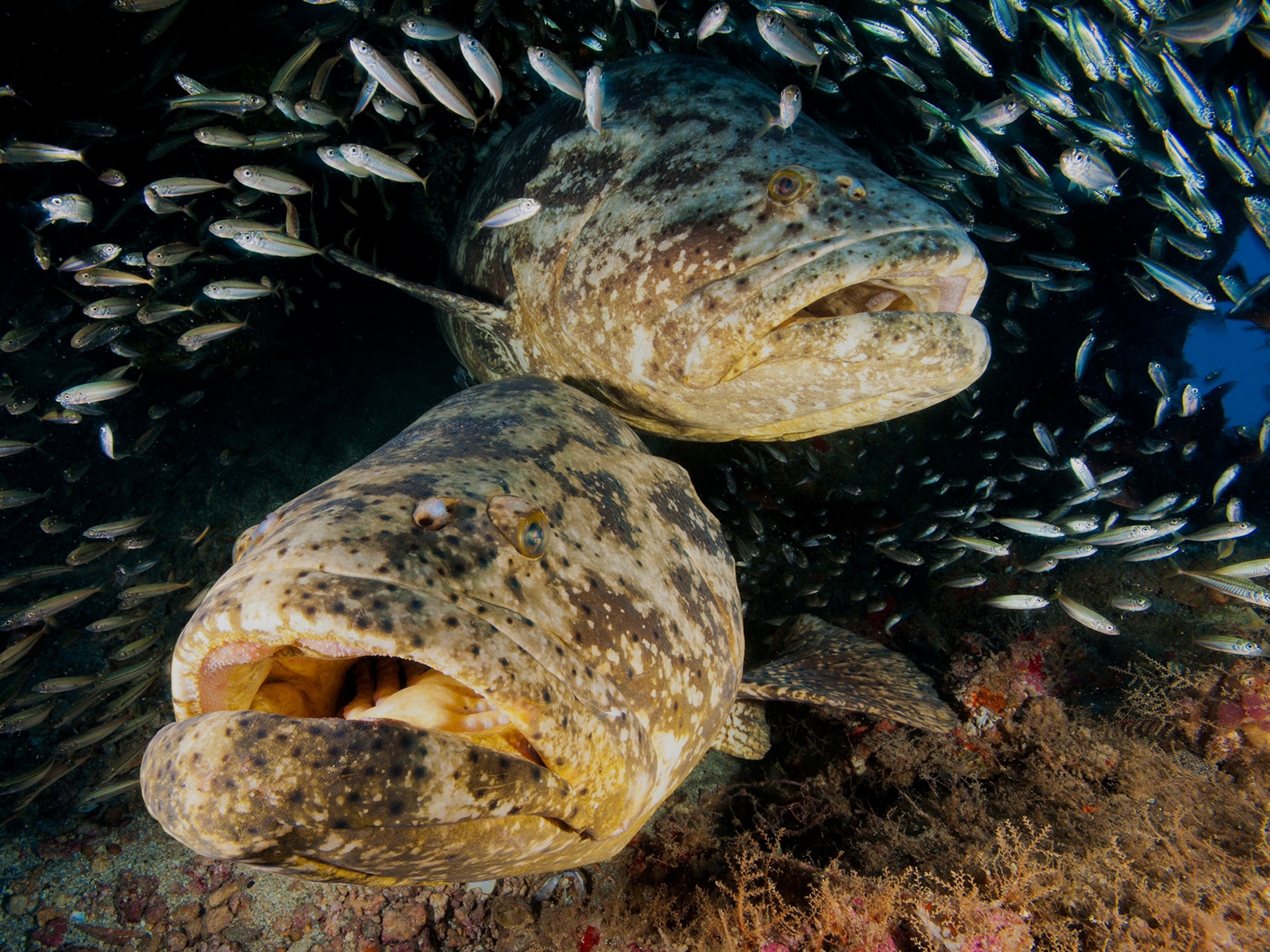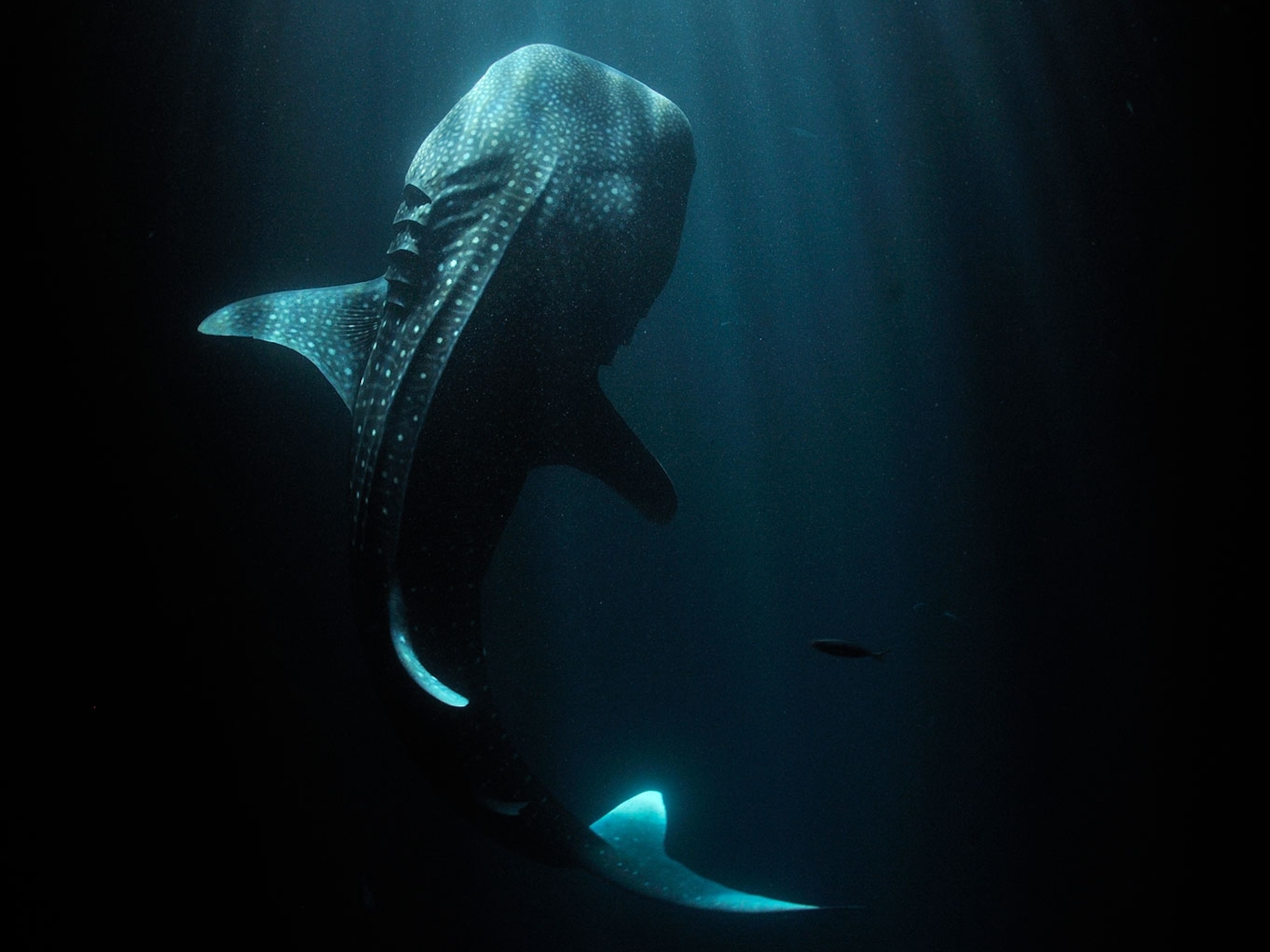In Australia, Aboriginal rangers race to save the last sawfish
Once found in tropical oceans around the world, the largetooth sawfish’s range has shrunk by an estimated 60 percent in a decade.
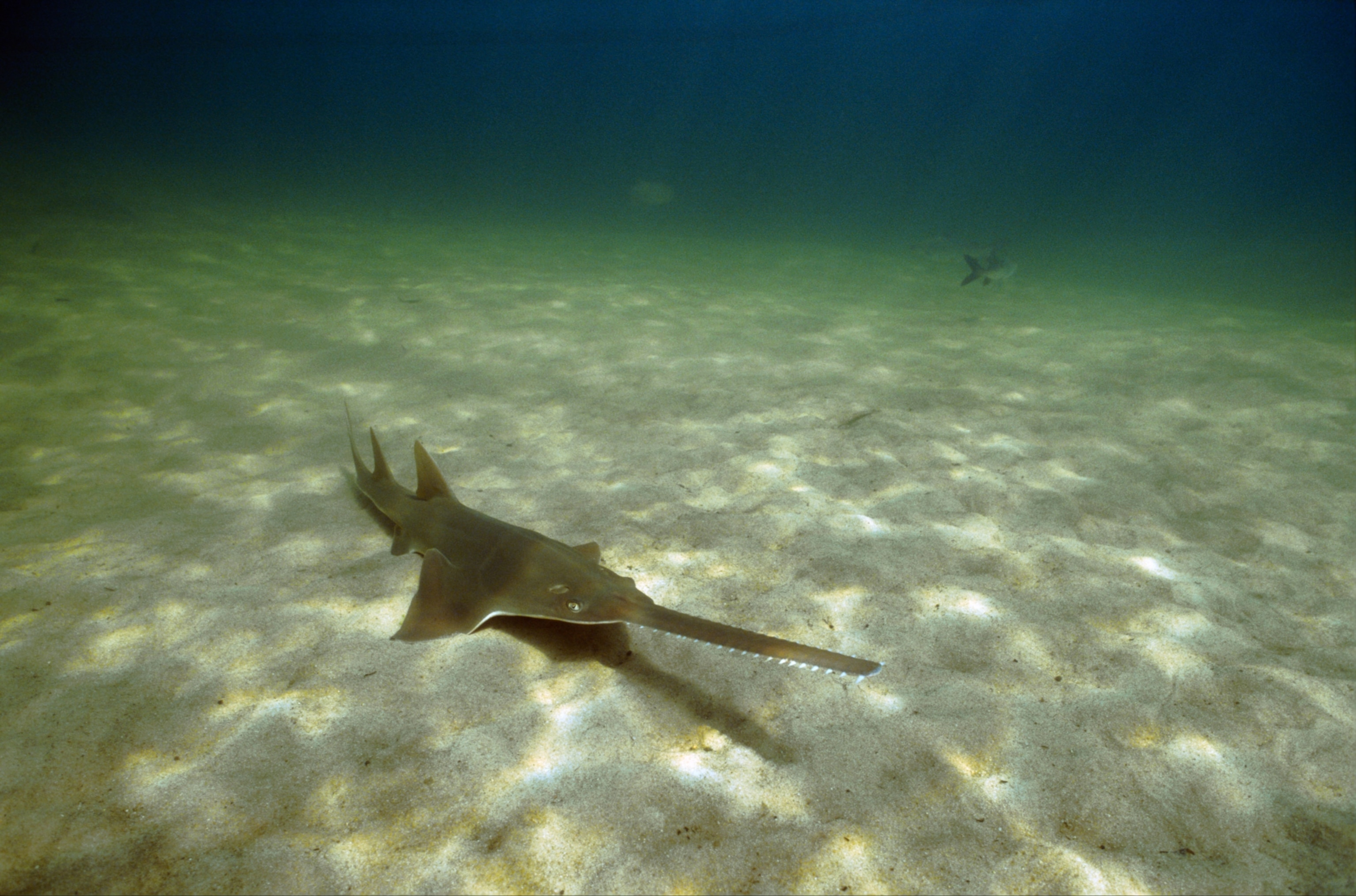
Melbourne, Australia — When a team of Aboriginal rangers and scientists arrived at the billabong, a shrinking oasis in a stretch of tropical savannah in Australia’s Northern Territory, they knew the clock was ticking.
It was September 2024, and the harsh dry season sun meant evaporating water would strand the freshwater sawfish pups within days. At the billabong’s edge lay the dehydrated remains of sawfish that had already perished in the receding waters.
After catching the pups by hand and with nets, the scientists, including Peter Kyne, noted each pup’s sex, placing a microchip under their skin, while rangers splashed the animals with water to keep them moist. Over two days, the team put 19 rescued pups into a water tank and drove them a short distance to the Daly River, releasing them into the murky depths.
(Related: Millions of Spiders Rain Down on Australia—Why?)
There’s no telling how many will survive, but for now they have a fighting chance, says Kyne, a conservation biologist at Charles Darwin University in Darwin, the capital of the Northern Territory. This 520,400-square-mile region is well known for the outback, a remote desert crisscrossed by several major rivers, including the Daly River. (Learn about freshwater threats.)
“Without any doubt, those animals would have died without a helping hand,” says Kyne. “Even if a small number make it to maturity, it'll be quite significant for a critically endangered species.”
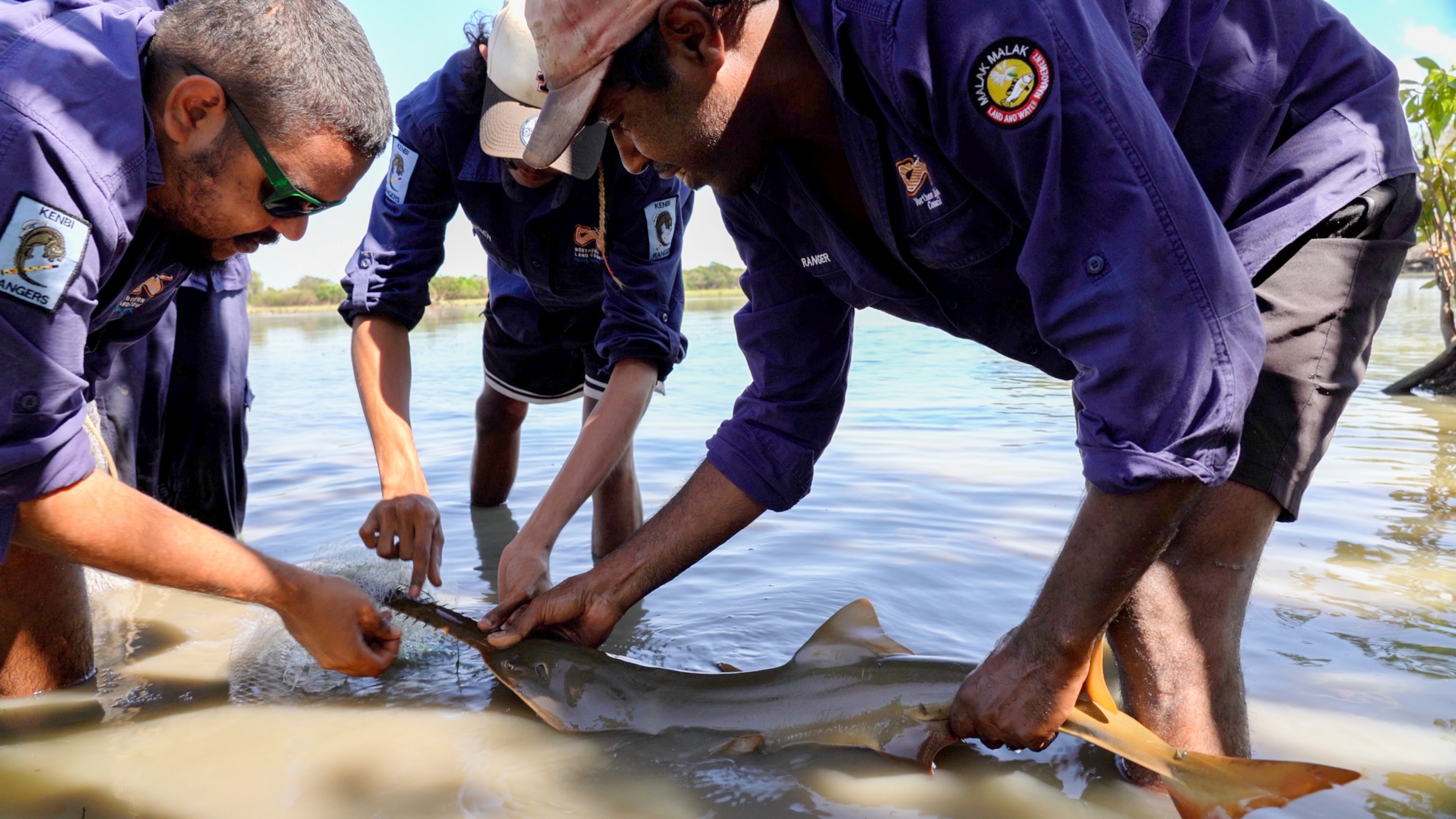
The freshwater, or largetooth, sawfish, is a type of large Australian ray with a chainsaw-shaped snout of sharp teeth that slice open fish and crustaceans. The 21-foot-long rays split their long lives between fresh and seawater, with females giving birth to an average of seven pups annually in Northern Territory rivers. Young sawfish mature in fresh water for about a decade before returning to the ocean.
Once found in tropical oceans worldwide, a combination of habitat loss and overfishing has shrunk the largetooth sawfish’s range by an estimated 60 percent between roughly 2000 and 2010. The four other sawfish species are also critically endangered, and their ranges have diminished by up to 80 percent.
Malak Malak rangers come from the Aboriginal community that are the Traditional Owners of the land surrounding the middle sections of the Daly River. Since 2012, the rangers have partnered with university scientists to patrol for and relocate sawfish in remote floodplains. Since then, the team has relocated 115 fish back into the Daly River. (What does the future look like in Indigenous hands?)
“Knowing we’re helping to grow their numbers in the wild and keeping them around long enough so other people can enjoy them is satisfying. I’d love to see an adult in the wild and not in an aquarium,” says Aaron Green, a senior Malak Malak ranger who has been part of the rescues from the beginning.
Taking a gamble
In November, lashing rains cause Northern Territory rivers to spill out into floodplains, expanding the feeding grounds for sawfish and other marine life. When the water recedes in July, it drains back into the main river via smaller channels. Many sawfish make it back to the river, but others are left behind.
“They’re naturally moving onto the floodplain when it floods because there’s a lot of food. It’s the best place for them to be—but it’s a lottery. If the waterholes dry up while you’re out there, you lose,” says Kyne.
And for a species whose range has declined dramatically in the last century, every fish counts—prompting the rescue efforts.
But it’s not easy. Not only is the Daly River the largest waterway in the region, it’s also full of dangerous saltwater crocodiles and bull sharks. The rangers’ vehicles can become bogged on rugged bush tracks, and the dry season heat can be oppressive.
The Northern Land Council represents the Aboriginal peoples living in the Top End of the Northern Territory. The council employs ranger groups from 14 Aboriginal communities to manage the land and work in collaboration with Australian government authorities. (Watch a video about the rangers' work eradicating an invasive weed.)
Seven of these land-management rangers are Malak Malak, employed from the three small towns scattered along the river, about three hours south of Darwin. While approximately 500 people live in the region, Nauiyu Nambiyu is the largest, with around 350 residents. From their headquarters here, the rangers patrol nearly 75,000 acres.
The rangers’ duties change with the season, but typically they’ll patrol the river monitoring fishing activity, breed and release weed-controlling insects, assist police with rescuing stranded fishers and boaters, and keep an eye out for the telltale splash of a stranded pup.
Life on the water
The Malak Malak rangers’ intricate knowledge of the floodplains comes from a lifetime spent on river country, traveling and fishing along communities up and downriver.
“For an Aboriginal person, floodplains are like a supermarket. There’s food everywhere, you’ve just got to know what you’re looking for,” says Green, adding that Malak Malak people do not eat sawfish as they are considered culturally important. (Read why Aboriginal Australians are still fighting for recognition.)
As the dry season intensifies, rangers camp out near the billabong to monitor the sawfish and, when the time is right, call Kyne to organize a rescue mission. This year they invited rangers from the Kenbi and Bulgul communities to learn how those groups can carry out rescues along other parts of the river.
So far, the partnership has provided valuable data about the largetooth sawfish’s genetics, including the revelation that each river system in the Northern Territory is home to distinct populations of sawfish. Kyne plans to combine rainfall and rescue data to better understand why pups become stranded on the floodplain, which could help predict when they need to be rescued.
“There’s still so much we don’t know about” sawfish, says Barbara Wueringer, founder and lead scientist of Sharks and Rays Australia, who is not involved in the sawfish rescues but studies all four native Australian sawfish species.
“Because they’re loyal to river systems, if you fish out one river, it's going to take a long time or be nearly impossible for them to repopulate,” says Wueringer, who supports these efforts.
Once in the ocean, adult sawfish are easily entangled in fishing nets due to their distinctive barbed snout. Most of the time, commercial fishers catch them accidentally, but some fishers target them for their large fins and saws, which are highly prized as trophies.
It is illegal to catch sawfish in Australia and 18 other countries, including the U.S., but the practice remains legal in parts of East Africa, South and Central America, and Southeast Asia.
A new threat emerges
There’s a new concern for sawfish in the Northern Territory—cotton farming.
Industrial farming stations, some double the size of London, have popped up across the region, and more than 120,000 acres of cotton farms will likely be planted within the next few years, according to a 2022 report commissioned by Territory Rivers: Keep ‘Em Flowing, an Australia-based alliance of nongovernmental organizations.
On average, cotton requires almost two Olympic-size swimming pools of water per acre. To meet this demand agriculturists are pushing to harvest water from the Daly River and its surrounding floodplains, says Kirsty Howey, executive director of the Environment Centre NT, a community-advocacy group.
“Plans to turn the Northern Territory into the food bowl of southern Asia have become supercharged in recent years,” says Howey. “We’re witnessing a rapid acceleration of land clearing to feed this new industry.”
Research from CSIRO, Australia’s main scientific body, has identified the industry will have significant impact on the environment by altering the river’s water levels and contaminating downstream ecosystems with pesticides and herbicides.
In a statement to National Geographic, a spokesperson from the Australian Department of Climate Change, Energy, the Environment and Water said water management rests with the states and territories, and that it is working with the Northern Territory government to determine whether recent land clearing was lawful.
Meanwhile, Aboriginal communities along the river, who depend on the waterway for food and transport, are concerned about what the cotton industry will mean for them, and the wildlife it sustains—including the sawfish.
“Taking away the river isn’t only going to affect our country,” says Green. “There are animals from other parts of the world here too, like the birds who migrate from Siberia. What happens when they fly here and find the water is all gone?”

